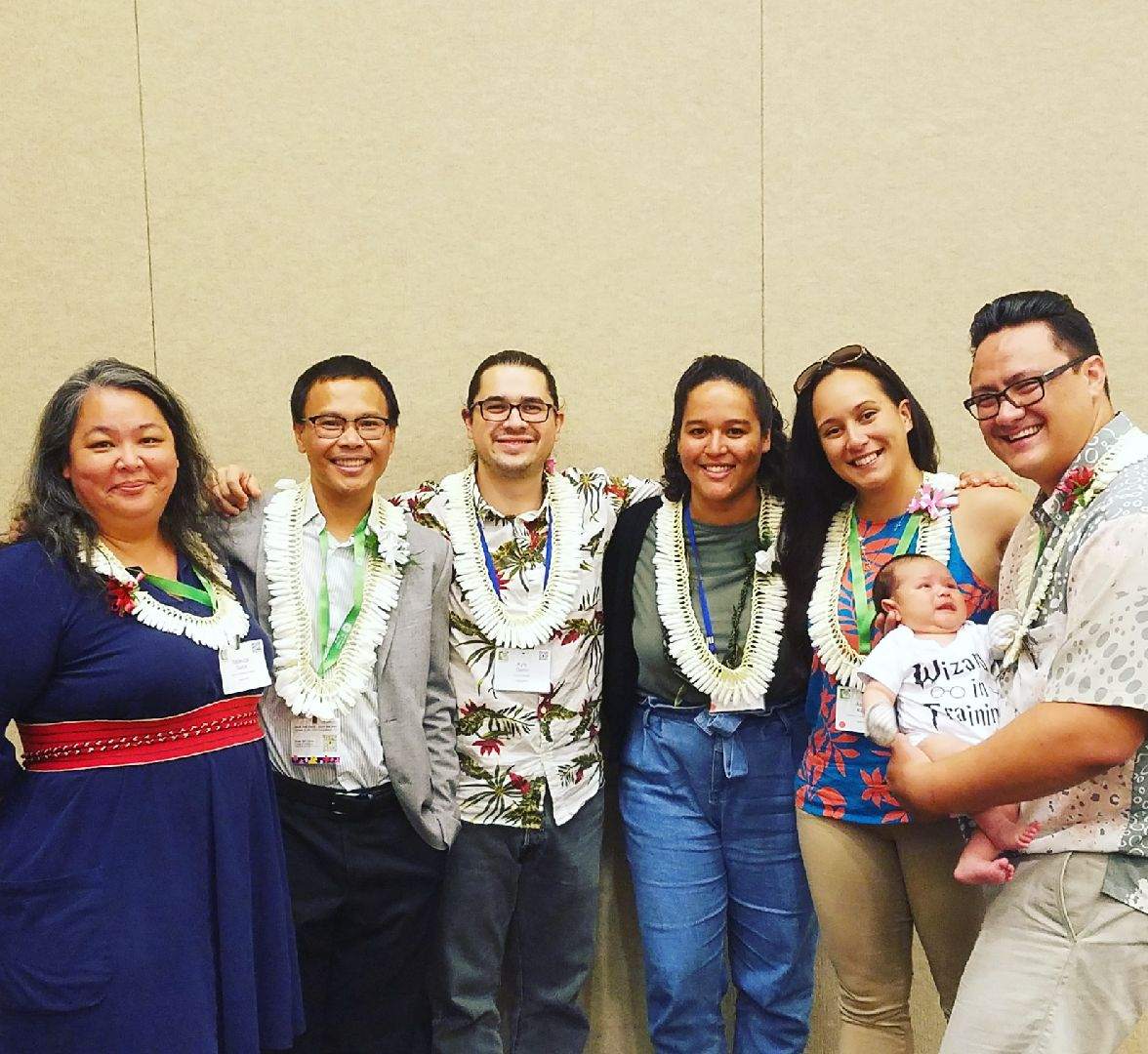SACNAS 2019 - Reflections from Kyle Dahlin
Thank you to guest blogger, Kyle Dahlin for sharing his SACNAS experience with the QUBES community!
The 2019 SACNAS National Diversity in STEM Conference is a meeting which seeks to improve the access and representation of under-represented minorities in STEM fields and academia. This year’s conference included many firsts: first held in Hawaiʻi, first to exceed over 5,000 attendees, first keynote speech by a head of state, and the first official meeting of Pacific Islander mathematicians. Since I was born and raised in Hawaiʻi, I couldn’t pass up this opportunity to go home to discuss my own research and to hear about the work of other mathematicians and scientists in my home community.
Preceding the conference was the Modern Math Workshop, organized by the Mathematical Sciences Research Institute. It featured workshops for undergraduates as well as presentations by early career researchers representing the eight Mathematical Science Institutes. The final panel and Q&A discussions provided young researchers an opportunity to get advice about how to continue their mathematical careers: whether that be in graduate school or with one of the mathematical institutes.

The conference was kicked off by traditional kīpaepae protocols which serve to both welcome guests and to ground them in values that are important in Hawaiian culture including aloha ʻāina (love and care for the land) and ʻimi naʻauao (seeking wisdom responsibly). The ceremony was followed by a stirring presentation by the President of the Republic of the Marshall Islands, Hilda Heine. President Heine spoke about the threats facing her country due to climate change and the ongoing impacts of American nuclear testing on their islands and called on scientists and world citizens to work together to ensure that Pacific Island nations have a future on our changing planet.
The Pacific Islanders in Mathematics session brought together six out of the (estimated) ten living Pacific Islander mathematicians (see photo to the left). It was amazing to finally get together as a group and discuss our research, experiences in academia, and how our backgrounds connect us. Pictured in the photo left to right are: Photo L to R: Dr. Rebecca Garcia, Sam Houston State University, Dr. Efren Ruiz*, University of Hawaiʻi at Hilo, Kyle Dahlin* (me), Purdue University, Dr. Marissa Loving*, Georgia Institute of Technology, Ashlee Kalauli*, University of California Santa Barbara, Kamuela KL Yong, future mathematician, Dr. Kamuela E Yong, University of Hawaiʻi at West Oʻahu. Those starred also spoke in the session organized by Dr. Yong and Dr. Garcia.
The conference also featured two sessions of mathematical biology. To start off Mathematical Modeling of Complex Adaptive Systems, Dr. Paul Hurtado explained the Generalized Linear Chain Trick, a new technique for developing ordinary differential equation models which expands the ways in which mathematicians can model populations and diseases. Dr. Kamuela Yong then shared his work on modelling the transmission of Rat Lungworm (Angiostrongylus cantonensis), a gross and deadly emerging disease in the state of Hawaiʻi. Next, Dr. Esther Widiasih presented a mathematical model used to estimate the dissolved oxygen content in traditional Hawaiian fishponds. This model can be used to help fishpond managers to avoid devastating fish die-offs. Finally we heard how Dr. Carrie Diaz Eaton studies communities of plants and their insect pollinators and the ways in which they may have coevolved mutualistically.
The session Research and Successful Collaborations of Mothers in Mathematical Biology featured the work of four mathematicians who are connected not just by their subject of choice, but by the support network they built with each other as mothers. Each presenter shared stories of being a mother and a professional mathematician alongside their research presentations. To start the session, Dr. Karen Rios-Soto discussed using models to develop strategies for mitigating the impact of Zika Virus which uses data from outbreaks in Puerto Rico. Then Dr. Deena Schmidt showed how dynamic models on networks can be used to represent and study a variety of biological systems. Dr. Sara Del Valle’s work on Dengue prediction in Brazil incorporates a variety of data sources (including Google searches!) in order to map Dengue risk throughout the country. Finally, Dr. Hannah Highlander told us how her career has grown and been sustained by forming research collaborations with undergraduates. Collectively, they showed that although there are many challenges and much work to be done, it is possible to be a great mathematician and a great mother.
The conference ended as it always does: with the SACNAS Annual Pow Wow. The event gave us all an opportunity to reflect on what we had learned and experienced over the past few days. Although we came from a variety of disciplines and backgrounds, we all left the conference feeling renewed in our collective goals to do good science and to make STEM fields more inclusive.
By Kyle Dahlin, PhD Candidate, Purdue